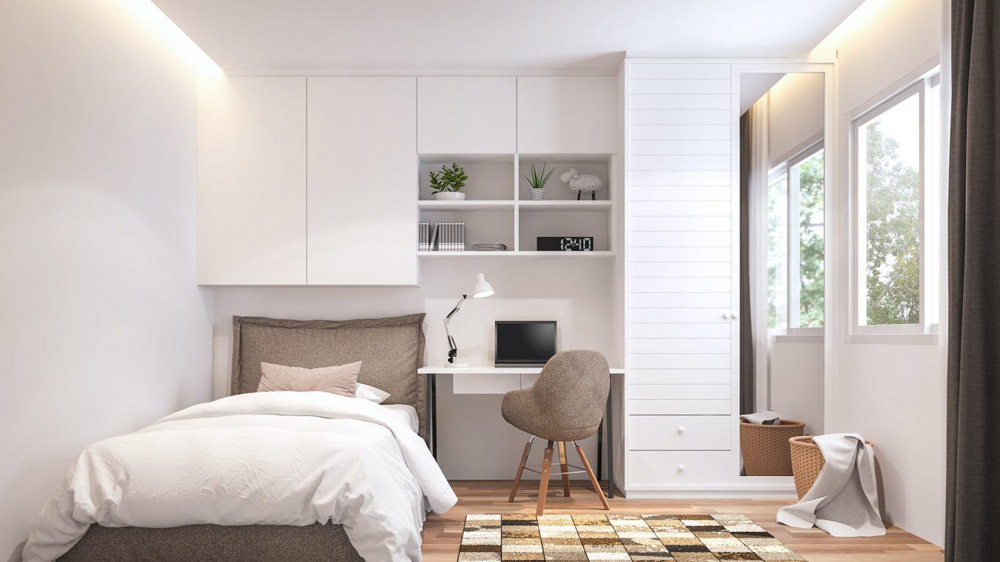A small bedroom can often feel cramped, dim, and uninviting—especially when cluttered or poorly designed. But with thoughtful design choices and strategic adjustments, you can transform a compact space into a room that feels open, airy, and bright. Whether you’re working with a tiny guest room, a studio apartment, or a modest master bedroom, the key lies in maximizing space and light without sacrificing comfort or style.
Contents
- Why Do Small Bedrooms Feel Cramped and Dim?
- Color Schemes That Visually Expand Space
- How to Maximize Natural and Artificial Light
- Smart Furniture Choices to Open Up the Room
- Layout and Floor Space Optimization Tips
- The Power of Decluttering and Simplifying
- Using Curtains, Ceilings, and Texture for Expansion
- Final Thoughts: Design Small, Live Large
Why Do Small Bedrooms Feel Cramped and Dim?
Our perception of space is strongly influenced by light, color, and the placement of objects. In small bedrooms, poor lighting, dark colors, and bulky furniture can create a sense of visual clutter and restriction. Additionally, low ceilings, minimal windows, or awkward layouts can exacerbate the problem, making the room feel more like a box than a retreat.
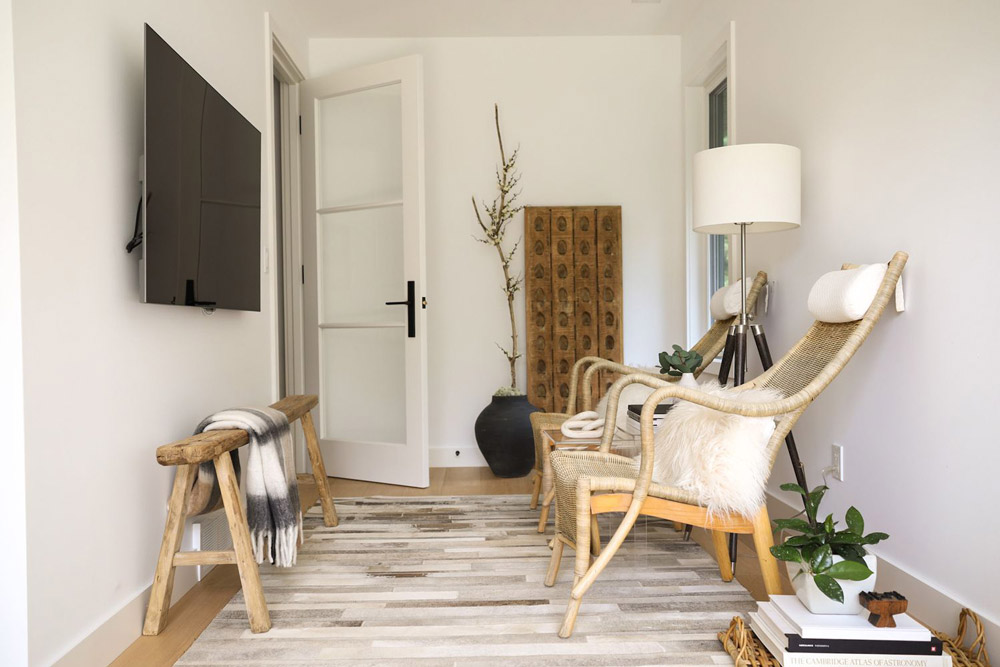
The Psychology of Space and Light
Light plays a crucial role in how we perceive size. Bright, well-lit rooms appear larger and more welcoming because light expands our visual boundaries. Similarly, an uncluttered layout and smart use of vertical space can create a sense of openness, even in limited square footage.
Common Design Mistakes That Shrink a Room
Using heavy drapes, dark wall colors, too much furniture, or overly ornate decor often works against the goal of making a small bedroom feel larger. These elements absorb light and break up the visual flow, which results in a more confined appearance.
Color Schemes That Visually Expand Space
Color is one of the most powerful tools in creating the illusion of space. Lighter hues reflect more light, opening up the room visually.
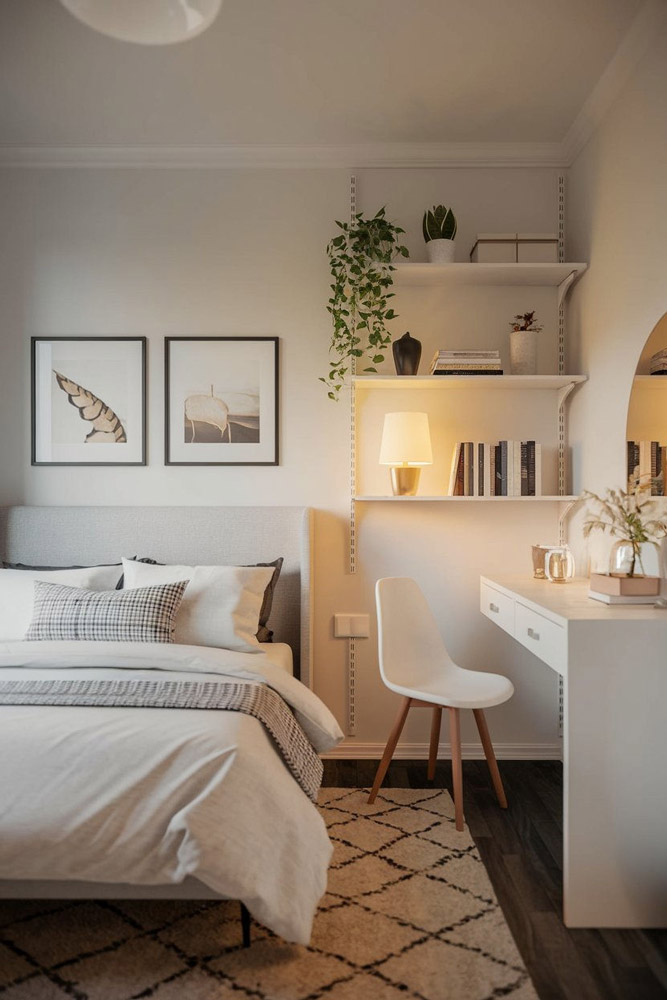
Best Wall Colors for Small Bedrooms
Soft whites, pale grays, muted beiges, and cool pastels like light blue or mint green are excellent choices for small bedrooms. These shades brighten up the space and enhance natural light. Crisp white walls paired with minimalistic accents offer a clean and spacious look.
Using Monochromatic and Tonal Palettes
Monochromatic color schemes, where the walls, trim, and furniture share similar hues, help to create a seamless visual experience. This technique reduces harsh contrasts and makes the room feel less busy and more cohesive.
How Contrast and Accents Affect Perception
While it’s important to keep the base palette light, carefully placed dark or bold accents—like a navy throw pillow or a matte black lamp—can add depth and sophistication without crowding the space.
How to Maximize Natural and Artificial Light
Lighting is critical in a small room. The more light you can introduce, the larger and more vibrant the space will feel.
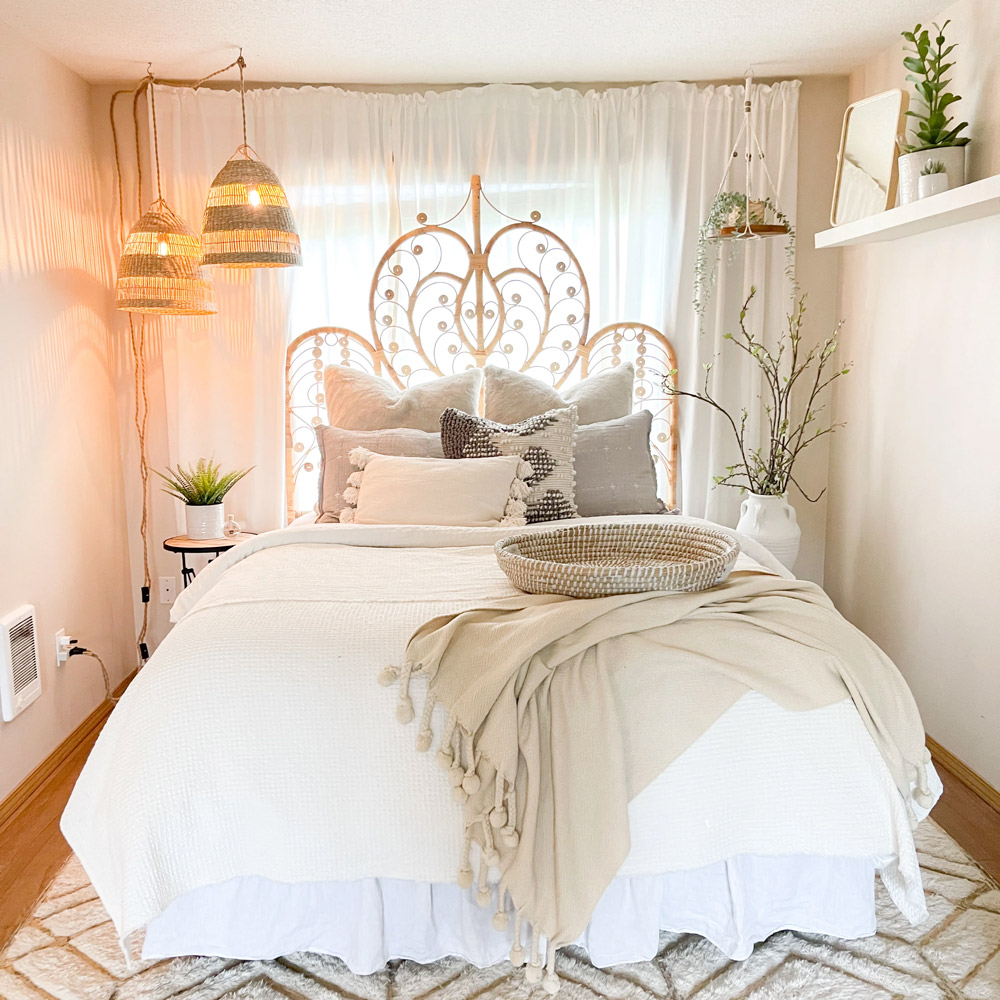
Placement Tips for Windows, Lamps, and Lights
Ensure window treatments allow the maximum amount of sunlight to flow in. Use sheer curtains or blinds that open fully. For artificial lighting, layer different types: ambient ceiling lights, task lighting by the bedside, and accent lighting for mood.
Using Mirrors to Reflect Light and Add Depth
Mirrors are a go-to trick for making a small bedroom look larger. Placing a mirror opposite a window reflects natural light, while mirrored closet doors or furniture help create visual extension.
Choosing Light Fixtures That Enhance Verticality
Opt for wall-mounted lights or pendant lamps instead of bulky table lamps. These options free up surface space and draw the eye upward, emphasizing vertical space.
Smart Furniture Choices to Open Up the Room
Furniture can either make or break a small bedroom design. Oversized or excessive furniture will quickly overwhelm the space.
Beds, Dressers, and Nightstands That Save Space
Choose a bed with built-in storage drawers or a lofted frame. Slim-profile dressers and nightstands that match the room’s scale will keep the space proportional.
Floating Furniture and Exposed Legs
Furniture that’s lifted off the floor on exposed legs allows more visibility underneath, which tricks the eye into thinking there’s more room. Floating desks and wall-mounted nightstands are also smart space-saving solutions.
Multi-functional Pieces: Storage Beds and Wall-Mounted Desks
Double-duty furniture is essential in tight spaces. A bed with under-bed drawers or a desk that folds up against the wall when not in use can significantly improve both functionality and openness.
Layout and Floor Space Optimization Tips
How you arrange your furniture matters just as much as the pieces you choose.
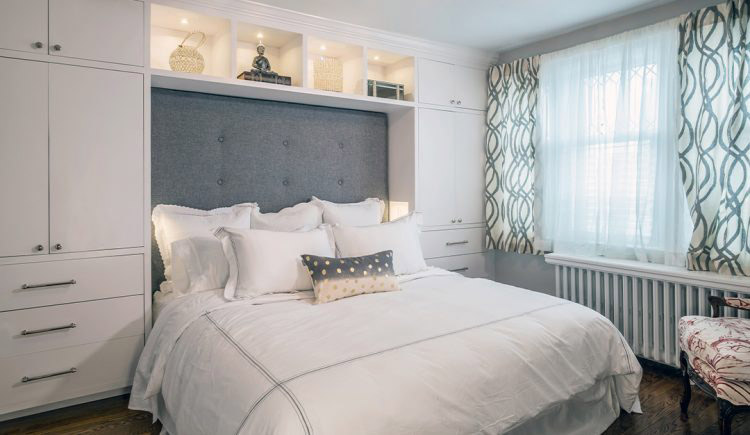
Arranging Furniture for Visual Breathing Room
Leave pathways between furniture, and avoid placing large items directly in front of windows or doors. The goal is to maintain a clear flow and allow light to pass through unblocked.
Clear Floor Space: Why Less is More
Minimize floor obstructions. Store items in bins or under-bed containers, and keep corners free of clutter to enhance the feeling of spaciousness.
Vertical Storage and Wall-Mounted Shelving
Take advantage of vertical real estate by installing shelving units that reach the ceiling. Not only do these provide additional storage, but they also draw the eye upward, increasing the perceived height of the room.
The Power of Decluttering and Simplifying
Decluttering isn’t just about organization—it directly affects how open and breathable a room feels.
Minimalist Design Strategies That Create Spaciousness
Stick to essential furniture and decor. A minimalist approach creates a sense of calm and clarity, both of which are key to making a room feel larger.
Scaling Decor and Accessories Appropriately
Avoid filling the space with many small decor items. Instead, use one or two large pieces—like a sizable piece of wall art or a statement headboard—which provide visual impact without overwhelming the room.
Tips for Hidden Storage and Underbed Organization
Keep everyday items tucked away in furniture with concealed storage. Use decorative baskets, bins, or drawer organizers to manage belongings while maintaining a clean look.
Using Curtains, Ceilings, and Texture for Expansion
Certain finishing touches can make a subtle yet powerful difference.
How to Hang Curtains to Make Windows Look Bigger
Mount curtains as close to the ceiling as possible and extend rods beyond the window frame. This creates the illusion of taller windows and higher ceilings.
Matching Ceiling and Wall Colors for Continuity
Painting the ceiling the same color—or a slightly lighter version—of the wall color blurs the line between wall and ceiling, making the room feel more expansive.
Subtle Textures That Add Warmth Without Bulk
Introduce texture through lightweight fabrics, natural fibers, or minimalistic patterns. This adds visual interest while keeping the space light and airy.
Final Thoughts: Design Small, Live Large
A small bedroom doesn’t have to feel restrictive. With the right strategies—light-enhancing colors, smart lighting, space-efficient furniture, and a decluttered layout—you can create a room that feels much larger and more comfortable than its square footage suggests. Start with one or two changes and build from there. Sometimes, even the smallest adjustments can make a significant impact on how a space looks and feels.
Would you like help formatting this article for your blog or optimizing it further for Google search rankings? I can also create a featured snippet, meta title/description, and internal linking strategy. Just let me know.

